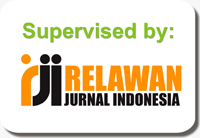Application of Faster R-CNN Deep Learning Method for Rice Plant Disease Detection
DOI:
https://doi.org/10.31961/eltikom.v8i2.1165Keywords:
Faster R-CNN, Grid Search, Deep Learning, Hyperparameter Tuning, Rice Plant Disease DetectionAbstract
Plant diseases, particularly in staple crops like rice, significantly affect the stability of rice production in Indonesia. Crop failure caused by rice plant diseases present a critical challenge for farmers. Early diagnosis is crucial for preventing and managing rice diseases, as it facilitates more effective preventive measures, reduces yield losses, and boosts overall agricultural production. This study aims to apply the Faster Region Convolutional Neural Network (Faster R-CNN), a deep learning approach, to detect rice plant diseases. The Grid Search method was employed as a hyperparameter tuning technique to identify the optimal parameter combination for enhancing algorithm performance. Experimental results demonstrate the model's performance, achieving an accuracy rate of 88%, recall and precision of 100%, and an F1 Score of 93%. These findings indicate that the Faster R-CNN method effectively recognizes and classifies rice plant diseases with a high degree of accuracy.
Downloads
References
D. Hafizah, D. B. Hakim, H. Harianto, and R. Nurmalina, “Analisis Elastisitas Pendapatan Rumah Tangga di Indonesia,” J. Ilmu Pertan. Indones., vol. 26, no. 3, pp. 428–435, 2021, doi: 10.18343/jipi.26.3.428.
BPS, Produksi Padi Di Indonesia 2022. Badan Pusat Statistik, 2022. [Online]. Available: https://www.bps.go.id/publication/2023/08/03/a78164ccd3ad09bdc88e70a2/luas-panen-dan-produksi-padi-di-indonesia-2022.html
A. Fiddin, M. Sutrawati, H. Bustamam, D. W. Ganefianti, and S. Sipriyadi, “Penyakit Tungro Pada Tanaman Padi (Oryza Sativa) Di Kecamatan Taba Penanjung : Insidensi Penyakit Dan Deteksi Virus Secara Molekuler,” J. Ilmu-Ilmu Pertan. Indones., vol. 23, no. 1, pp. 37–45, Jun. 2021, doi: 10.31186/jipi.23.1.37-45.
S. Sopialena, S. Suyadi, S. Sofian, D. Tantiani, and A. N. Fauzi, “Efektivitas Cendawan Endofit Sebagai Pengendali Penyakit Blast Pada Tanaman Padi (Oryza sativa),” Agrifor, vol. 19, no. 2, p. 355, 2020, doi: 10.31293/af.v19i2.4813.
N. Sari et al., “Pengabdian kepada Masyarakat: Pengenalan Penyakit Tanaman Padi dan Teknik Pengendaliannya di Desa Bentok Darat, Bati-bati, Kalimantan Selatan,” Lumbung Inov. J. Pengabdi. Kpd. Masy., vol. 8, no. 2, pp. 232–243, 2023, doi: 10.36312/linov.v8i1.1130.
L. Budiarti et al., “Inventarisasi Serangga Hama dan Penyakit pada Berbagai Galur Tanaman Padi,” J-Plantasimbiosa, vol. 4, no. 1, pp. 36–49, Jun. 2022, doi: 10.25181/jplantasimbiosa.v4i1.2561.
Y. Linda, Marsuki Iswandi, and Idrus Salam, “Analisis Risiko Usahatani Padi Sawah di Desa Iwoimea Jaya Kecamatan Aere Kabu-paten Kolaka Timur,” Perbal J. Pertan. Berkelanjutan, vol. 11, no. 2, pp. 219–229, Jul. 2023, doi: 10.30605/perbal.v11i2.2645.
Y. Yusuf Hidayat, M. Marli Batubara, and R. Kurniawan, “Peran Penyuluh Pertanian Lapangan Dalam Mendampingi Kelompok Tani Padi Di Kecamatan Lalan Kabupaten Musi Banyuasin,” Soc. J. Ilmu-Ilmu Agribisnis, vol. 6, no. 1, p. 30, Jun. 2017, doi: 10.32502/jsct.v6i1.824.
S. Xie, Z. Yu, and Z. Lv, “Multi-disease prediction based on deep learning: A survey,” C. - Comput. Model. Eng. Sci., vol. 127, no. 3, 2021, doi: 10.32604/CMES.2021.016728.
Y. Lecun, Y. Bengio, and G. Hinton, “Deep learning,” Nature, vol. 521, no. 7553, pp. 436–444, 2015, doi: 10.1038/nature14539.
H. Noprisson, “Fine-Tuning Model Transfer Learning VGG16 Untuk Klasifikasi Citra Penyakit Tanaman Padi,” JSAI (Journal Sci. Appl. Informatics), vol. 5, no. 3, pp. 244–249, 2022, doi: 10.36085/jsai.v5i3.3609.
A. K and A. S. Singh, “Detection of Paddy Crops Diseases and Early Diagnosis Using Faster Regional Convolutional Neural Networks,” in 2021 International Conference on Advance Computing and Innovative Technologies in Engineering (ICACITE), IEEE, Mar. 2021, pp. 898–902. doi: 10.1109/ICACITE51222.2021.9404759.
E. Murniyasih and L. Suryani, “Penerapan Metode Learning Vector Quantization Untuk Identifikasi Penyakit Padi Berdasarkan Ben-tuk Bercak Daun,” Electro Luceat, vol. 6, no. 1, pp. 28–35, Jul. 2020, doi: 10.32531/jelekn.v6i1.190.
J. Redmon, S. Divvala, R. Girshick, and A. Farhadi, “You only look once: Unified, real-time object detection,” in Proceedings of the IEEE Computer Society Conference on Computer Vision and Pattern Recognition, Jun. 2016, pp. 779–788. doi: 10.1109/CVPR.2016.91.
T. Setiady, “Leaf Rice Disease,” Https://Www.Kaggle.Com/Datasets/Tedisetiady/Leaf-Rice-Disease-Indonesia/. 2021.
S. Saifullah, M. Zarlis, Z. Zakaria, and R. W. Sembiring, “Analisa Terhadap Perbandingan Algoritma Decision Tree Dengan Algoritma Random Tree Untuk Pre-Processing Data,” J-SAKTI (Jurnal Sains Komput. dan Inform., vol. 1, no. 2, p. 180, 2017, doi: 10.30645/j-sakti.v1i2.41.
S. Ren, K. He, R. Girshick, and J. Sun, “Faster R-CNN: Towards Real-Time Object Detection with Region Proposal Networks,” Total Perform. Scorec., pp. 159–183, Jun. 2015, doi: 10.48550/arXiv.1506.01497.
G. Erdogan Erten, S. Bozkurt Keser, and M. Yavuz, “Grid Search Optimised Artificial Neural Network for Open Stope Stability Predic-tion,” Int. J. Mining, Reclam. Environ., vol. 35, no. 8, pp. 600–617, Sep. 2021, doi: 10.1080/17480930.2021.1899404.
D. Chicco, N. Tötsch, and G. Jurman, “The matthews correlation coefficient (Mcc) is more reliable than balanced accuracy, bookmak-er informedness, and markedness in two-class confusion matrix evaluation,” BioData Min., vol. 14, pp. 1–22, 2021, doi: 10.1186/s13040-021-00244-z.
M. M. Baharuddin, H. Azis, and T. Hasanuddin, “Analisis Performa Metode K-Nearest Neighbor Untuk Identifikasi Jenis Kaca,” Ilk. J. Ilm., vol. 11, no. 3, pp. 269–274, 2019, doi: 10.33096/ilkom.v11i3.489.269-274.
Downloads
Published
How to Cite
Issue
Section
License
Copyright (c) 2024 Halim Pujiono, Anik Vega Vitianingsih, Slamet Kacung, Anastasia Lidya Maukar, Seftin Fitri Ana Wati

This work is licensed under a Creative Commons Attribution 4.0 International License.
All accepted papers will be published under a Creative Commons Attribution 4.0 International (CC BY 4.0) License. Authors retain copyright and grant the journal right of first publication. CC-BY Licenced means lets others to Share (copy and redistribute the material in any medium or format) and Adapt (remix, transform, and build upon the material for any purpose, even commercially).




